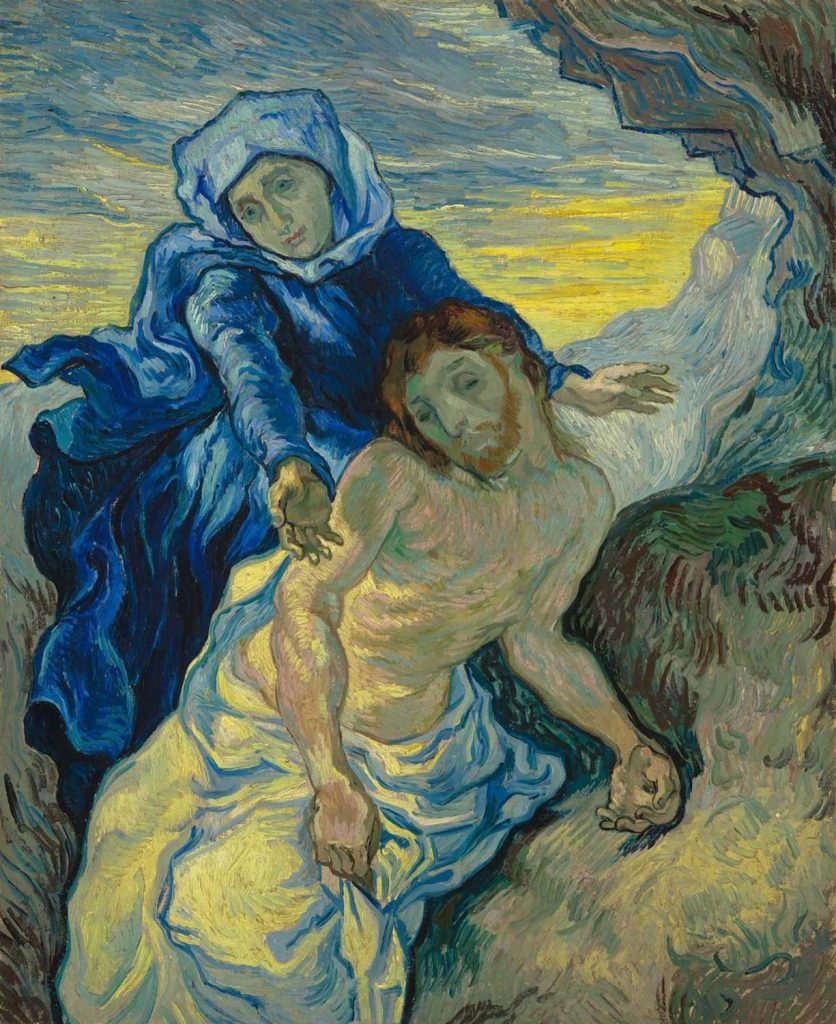
Pietà (after Delacroix) by Vincent van Gogh was created in 1889. The painting is in Van Gogh Museum Amsterdam. The size of the work is 73 x 60,5 cm and is made as an oil on canvas.
Van Gogh based his Pietà on a lithograph of a painting by Eugène Delacroix. In fact, it is more a variation on the original work than a copy. From Delacroix, Van Gogh took the theme of the Virgin Mary mourning the dead Christ, as well as the composition. He added his own colour and personal signature. (Read more in Van Gogh Museum Amsterdam)
About the Artist: Dutch Post-Impressionist painter Vincent van Gogh was born in Groot-Zundert. Van Gogh was a serious and thoughtful child. His interest in art began at a young age. Constant Cornelis Huijsmans, who had been a successful artist in Paris, taught the students at Tilburg. His philosophy was to reject technique in favour of capturing the impressions of things, particularly nature or common objects. Van Gogh’s profound unhappiness seems to have overshadowed the lessons, which had little effect. In March 1868, he abruptly returned home. He later wrote that his youth was “austere and cold, and sterile”… Read more
